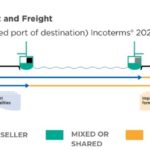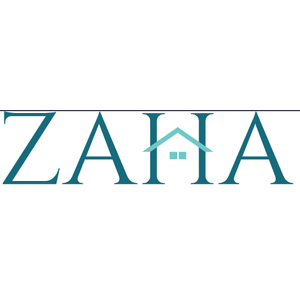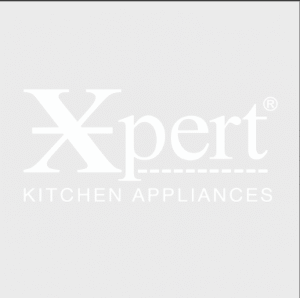In today’s competitive landscape, a high-performing call center is not just a cost center but a crucial driver of customer satisfaction, loyalty, and ultimately, business growth. Effective call center monitoring and performance management are indispensable for achieving this. They provide the insights needed to optimize operations, enhance agent capabilities, and deliver exceptional customer experiences consistently.
Beyond simply listening in on calls, modern monitoring encompasses a holistic approach to understanding and improving every facet of call center operations. It leverages technology and strategic processes to transform raw data into actionable intelligence. This article delves into 11 best practices that can revolutionize your call center’s performance, ensuring both efficiency and excellence.
1. Define Clear KPIs and Metrics
The foundation of effective performance management is a well-defined set of Key Performance Indicators (KPIs) and metrics. Without clear objectives, it’s impossible to measure success or identify areas for improvement. Start by establishing KPIs that align with your business goals. Common call center KPIs include:
- Average Handle Time (AHT): Measures the average duration of a customer interaction.
- First Contact Resolution (FCR): The percentage of customer issues resolved on the first interaction.
- Customer Satisfaction (CSAT): Typically measured via post-interaction surveys.
- Net Promoter Score (NPS): Gauges customer loyalty and willingness to recommend.
- Service Level: The percentage of calls answered within a predefined time frame.
- Adherence to Schedule: How well agents stick to their assigned schedules.
These metrics provide a quantitative baseline against which agent and team performance can be accurately assessed and tracked over time.
2. Implement Robust Call Center Agent Monitoring Software
At the heart of modern call center performance management lies sophisticated call center agent monitoring software. This technology goes far beyond basic call recording. It enables supervisors to monitor interactions in real-time, review past conversations, and even observe agent desktop activity. Key features often include:
- Call Recording: Captures audio of all interactions for quality assurance, training, and dispute resolution.
- Screen Monitoring: Records or provides live views of an agent’s desktop activities, ensuring adherence to processes and identifying workflow inefficiencies.
- Live Listening/Barge-in: Allows supervisors to listen to calls in progress, offering immediate coaching or taking over the call if necessary.
- Speech Analytics: Automatically analyzes call recordings for keywords, sentiment, and common issues, providing invaluable insights at scale.
Implementing comprehensive call center agent monitoring software is crucial for identifying training gaps, ensuring compliance, and providing targeted feedback to agents. It transforms anecdotal observations into data-driven insights.
3. Leverage Advanced Call Center QA Tools
Quality Assurance (QA) is not merely a formality; it’s a continuous process of evaluation and refinement. Advanced call center QA tools are essential for standardizing the evaluation process and ensuring consistent service delivery. These tools often feature:
- Customizable Scorecards: Tailored evaluation forms to assess specific agent behaviors, adherence to scripts, empathy, problem-solving skills, and compliance.
- Automated Scoring & Tagging: Reduces manual effort by automatically scoring certain aspects of calls based on speech analytics or pre-defined criteria.
- Interaction History: Provides a chronological view of all customer interactions, helping agents and supervisors understand the full context.
- Workflow Automation: Routes specific calls for review based on flags (e.g., negative sentiment, long hold times) to targeted QA specialists.
By effectively utilizing call center quality assurance software, organizations can pinpoint areas of excellence, identify systemic issues, and deliver highly specific, actionable feedback to agents, leading to tangible improvements in customer experience.
4. Establish a Structured Feedback and Coaching Loop
Monitoring and QA data are only valuable if they lead to action. A structured feedback and coaching loop is paramount for agent development. This involves:
- Regular One-on-One Sessions: Scheduled meetings between supervisors and agents to review performance data, call recordings, and QA scores.
- Constructive Feedback: Focusing on specific behaviors and outcomes, rather than personal criticism, and offering clear suggestions for improvement.
- Development Plans: Collaboratively creating personalized plans for agents to address weaknesses and build on strengths.
- Peer Coaching: Encouraging experienced agents to mentor newer ones, fostering a collaborative learning environment.
The goal is to foster a growth mindset, where monitoring is perceived as a tool for development, not just surveillance.
5. Foster a Culture of Continuous Improvement
Beyond formal coaching, cultivate an environment where continuous learning and improvement are ingrained in the daily routine. This can be achieved through:
- Regular Training Sessions: Addressing common challenges identified through monitoring and QA.
- Knowledge Sharing: Encouraging agents to share best practices and solutions to complex problems.
- Gamification: Introducing friendly competitions and rewards for achieving performance targets or demonstrating exceptional customer service.
- Recognition Programs: Publicly acknowledging and celebrating agent successes to boost morale and reinforce desired behaviors.
A culture that values growth ensures agents are always striving for excellence, benefiting both their personal development and the call center’s overall performance.
6. Optimize Call Center Process Management
Efficient call center process management is critical for both agent productivity and customer satisfaction. Streamlined processes reduce agent cognitive load, minimize errors, and accelerate resolution times. Best practices include:
- Standardized Workflows: Documenting and implementing consistent steps for handling common inquiries and issues.
- Up-to-Date Knowledge Base: Providing agents with easy access to comprehensive and accurate information, reducing the need for lengthy research or escalations.
- Effective Scripting/Playbooks: Offering guidance for common scenarios while allowing for flexibility and personalization.
- Automated Routing: Ensuring calls are directed to the most appropriate agent or department, minimizing transfers.
- Cross-Functional Collaboration: Working with other departments to resolve process bottlenecks that impact customer interactions.
Optimized processes empower agents to deliver faster, more consistent, and higher-quality service.
7. Utilize Workforce Management (WFM) Solutions
Workforce Management (WFM) solutions are crucial for optimizing staffing levels and schedules to meet demand. Effective WFM ensures the right number of agents with the right skills are available at the right time, preventing both understaffing (leading to long wait times) and overstaffing (leading to unnecessary costs). Key aspects include:
- Accurate Forecasting: Predicting call volumes and patterns based on historical data.
- Optimal Scheduling: Creating efficient schedules that align agent availability with forecasted demand.
- Adherence Monitoring: Tracking how well agents follow their schedules and identifying deviations.
- Intraday Management: Making real-time adjustments to schedules based on unexpected fluctuations in call volume.
WFM directly impacts service levels, agent utilization, and operational costs.
8. Embrace Data-Driven Decision Making
Aggregated data from your call center agent monitoring software, call center QA tools, and other systems should be the foundation for all strategic decisions. Move beyond gut feelings and leverage analytics to:
- Identify Trends: Spot recurring customer issues, common agent mistakes, or peak demand periods.
- Root Cause Analysis: Determine the underlying reasons for poor performance or customer dissatisfaction.
- Predictive Analytics: Forecast future performance based on current trends and historical data.
- A/B Testing: Experiment with different approaches (e.g., new scripts, training methods) and measure their impact.
Regularly reviewing dashboards and reports allows management to proactively address challenges and seize opportunities for improvement.
9. Ensure Transparency and Agent Buy-in
For monitoring to be effective, agents must understand its purpose and feel that it’s fair. Transparency builds trust and encourages buy-in.
- Communicate the “Why”: Clearly explain that monitoring is for development, quality improvement, and ensuring compliance, not just punitive measures.
- Share Performance Goals: Involve agents in setting individual and team goals, making them feel invested in the outcomes.
- Provide Access to Their Data: Allow agents to view their own performance metrics, call recordings, and QA scores.
- Solicit Agent Feedback: Regularly ask agents for their input on processes, tools, and challenges they face. Their frontline perspective is invaluable.
When agents feel respected and understand the benefits, they are more likely to engage positively with monitoring processes.
10. Prioritize Agent Well-being and Engagement
High-stress environments can lead to burnout, high turnover, and decreased performance. Prioritizing agent well-being directly impacts their ability to perform.
- Manage Workload Effectively: Prevent excessive overtime and ensure reasonable breaks.
- Provide Stress Management Resources: Offer tools or training to help agents cope with difficult calls.
- Foster a Positive Work Environment: Encourage teamwork, respect, and open communication.
- Recognize and Reward Effort: Acknowledge hard work and achievements beyond just performance metrics.
- Invest in Ergonomics: Ensure comfortable workstations and a conducive office environment.
Engaged and well-supported agents are more productive, resilient, and less likely to leave, which significantly reduces recruitment and training costs.
11. Regularly Review and Adapt Monitoring Strategies
The call center environment is dynamic. Customer expectations evolve, technology advances, and business objectives can shift. Therefore, your monitoring and performance management strategies should not be static.
- Periodic Review of KPIs: Ensure your chosen metrics are still relevant and accurately reflect your business goals.
- Tool Assessment: Evaluate whether your call center agent monitoring software and call center QA tools are still meeting your needs or if newer solutions offer better capabilities.
- Process Audits: Regularly review your call center process management workflows to identify bottlenecks or inefficiencies that may have emerged.
- Stay Abreast of Industry Trends: Keep an eye on new technologies and best practices in the call center industry.
By treating monitoring and performance management as iterative processes, you ensure your call center remains agile, efficient, and customer-centric in the long run.
Conclusion
Effective call center monitoring and performance management are not about micromanagement; they are about empowerment, optimization, and continuous improvement. By embracing robust call center agent monitoring software, leveraging sophisticated call center QA tools, and adhering to best practices in call center process management, organizations can transform their contact centers into strategic assets. These 11 best practices provide a comprehensive framework to enhance agent performance, streamline operations, elevate customer satisfaction, and ultimately, drive sustainable business success. Invest in these practices, and watch your call center move from a cost center to a true value driver.
- Call Center Monitoring & Performance Management: 11 Best Practices
- Discover 11 best practices for effective call center monitoring and performance management to boost agent productivity, CX quality, and operational efficiency.
- call center agent monitoring software, call center process management, call center qa tools, call center quality assurance software
Related posts:
 The Power Shift: How AI Democratization is Redefining Access and Opportunity
The Power Shift: How AI Democratization is Redefining Access and Opportunity
 Maximize Uptime & Security with Houston’s Managed IT Services
Maximize Uptime & Security with Houston’s Managed IT Services
 CIF Meaning in Shipping Explained: Cost, Insurance, and Freight
CIF Meaning in Shipping Explained: Cost, Insurance, and Freight
 Why Paystub Generator Free Tools Are Gaining Popularity in 2025
Why Paystub Generator Free Tools Are Gaining Popularity in 2025
 Mastering ChatGPT Online: Tips, Tricks, and Best Practices for 2025
Mastering ChatGPT Online: Tips, Tricks, and Best Practices for 2025
 QuickBooks Payroll Error 17337: Solutions You Need Now QuickBooks
QuickBooks Payroll Error 17337: Solutions You Need Now QuickBooks
 From Livestreams to Global Clips: How QQAI.ai Is Turning AI Video Editing into a Worldwide Opportunity
From Livestreams to Global Clips: How QQAI.ai Is Turning AI Video Editing into a Worldwide Opportunity
 Explore Latest Tech Trends in Shower Screen Sydney Glass Designs
Explore Latest Tech Trends in Shower Screen Sydney Glass Designs








